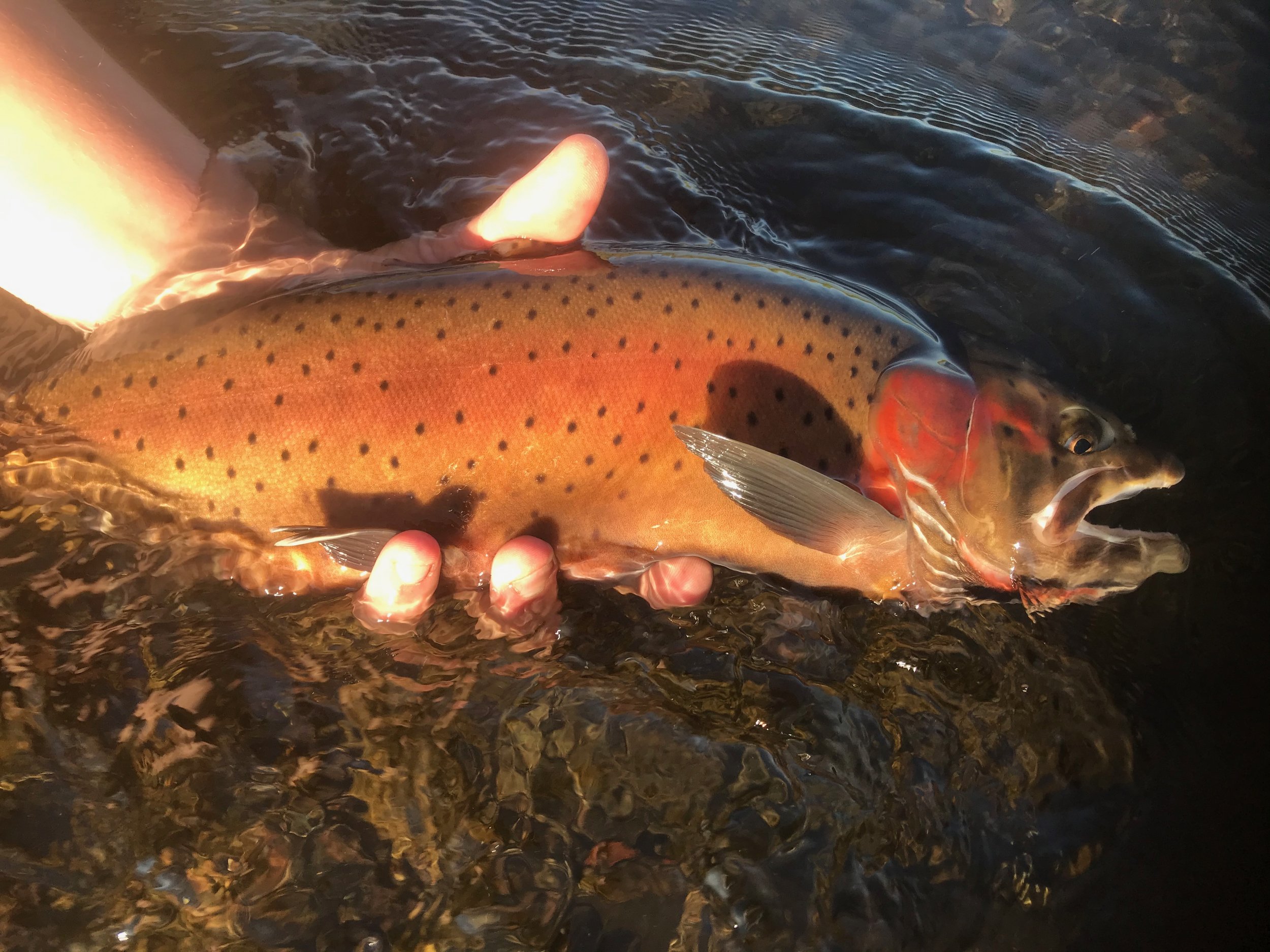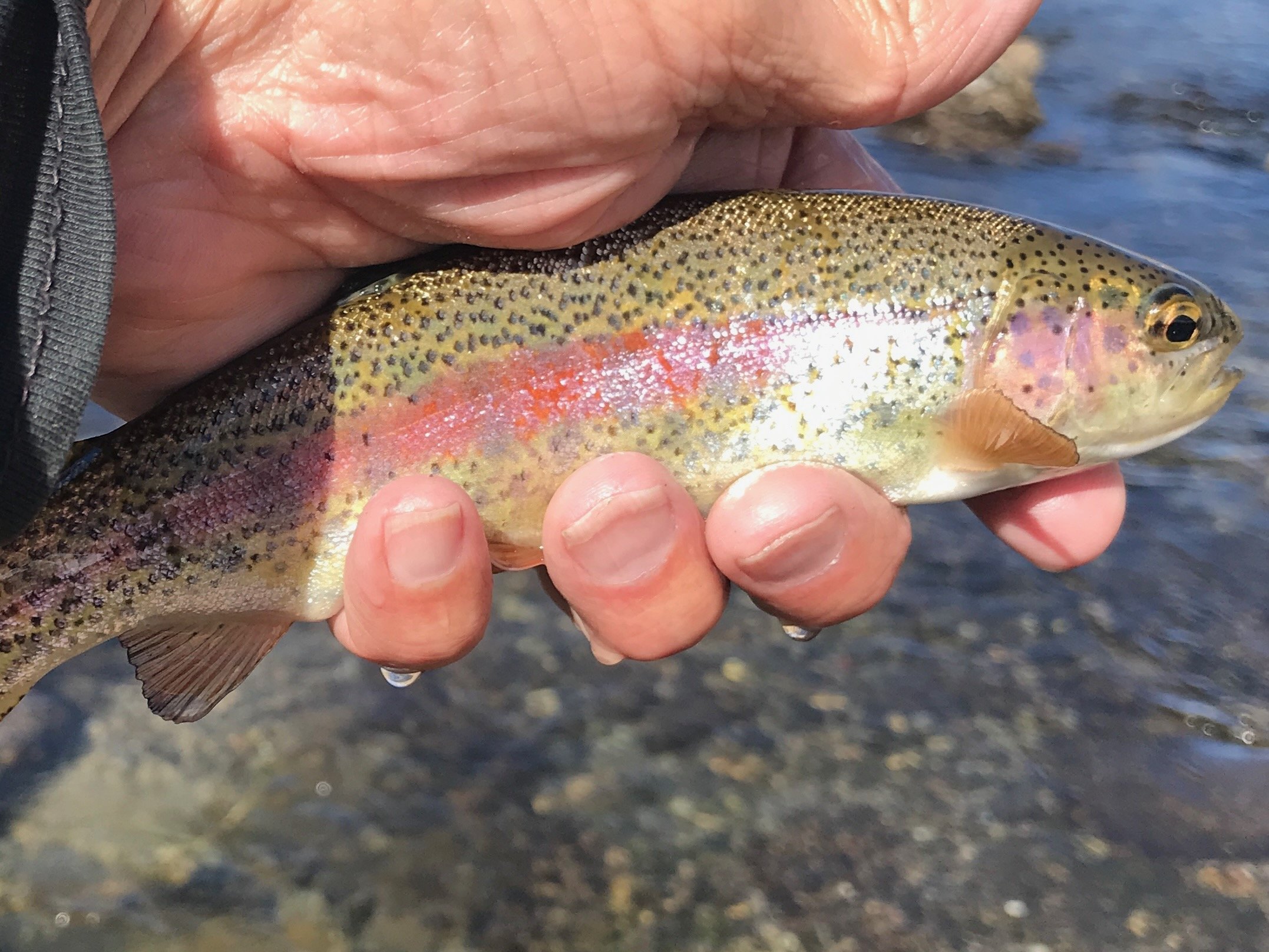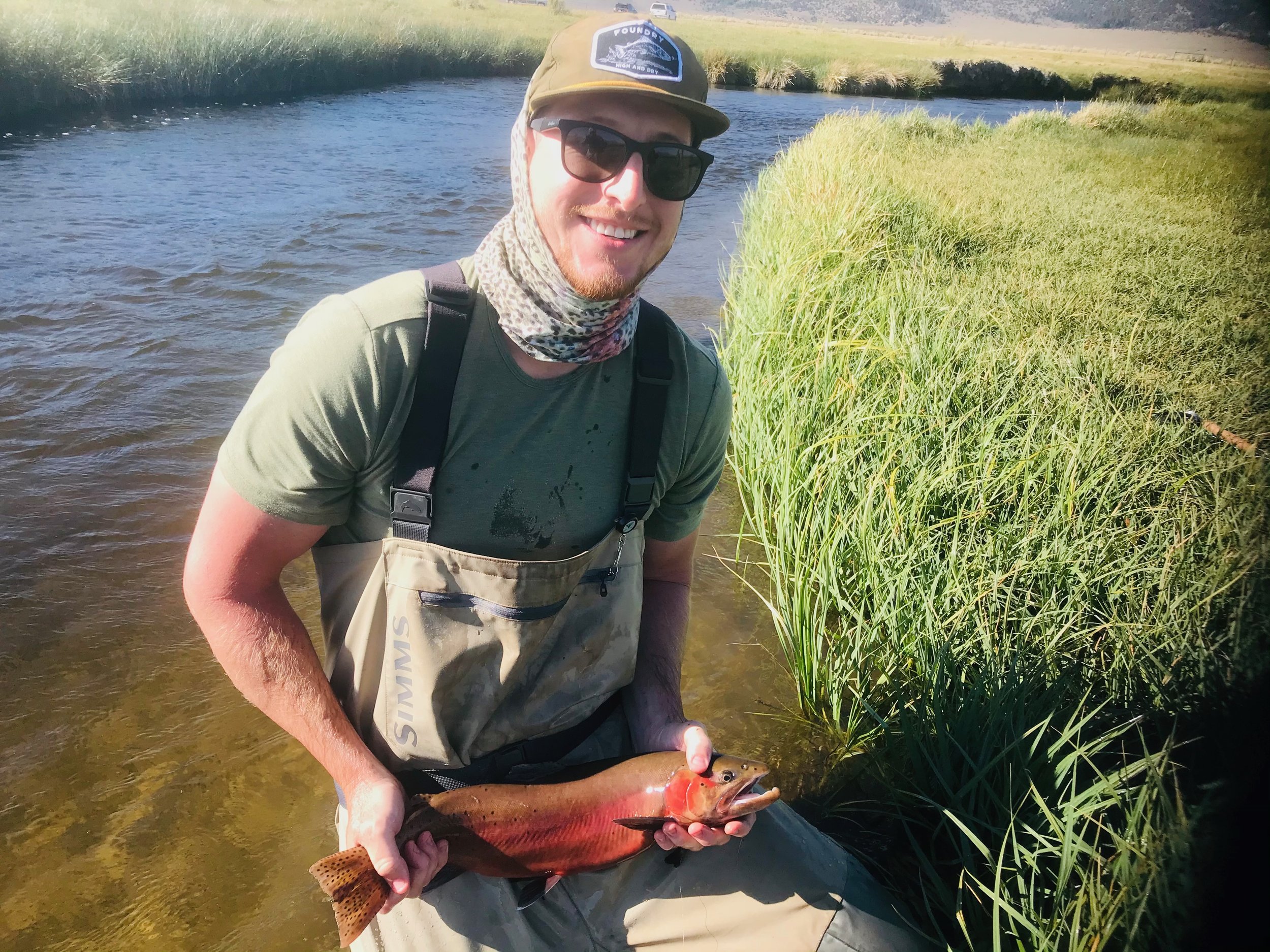Spring in the Eastern Sierra is a lot of cold windy days with a few sunny windless days sprinkled in. Fly fishers need to take advantage of the warm windless day if they can. A big wind is expected to blow through right before the weekend. Dirt roads in the Long Valley area are drying out after the storms. Fly fishers should drive with caution as there are a few mud puddles that could cause you to get stuck. Getting stuck can ruin a day’s fly fishing. Hatches of mayflies, caddis flies and midges are feeding the trout. While there is some good dry fly activity most of the trout are feeding on the nymphs. Traditional opening weekend is three weeks away.
Cutthroat season is from early May through Memorial day.
Lower Owens River
Wild Trout Section:
Flows are staring to increase and are up to 175 CFS as of this writhing. There is a week or so of good fly fishing left. Mid-day mayfly hatches continue to make it the best time of the day to be on the water. While some spots are offering good dry fly activity, nymphing is the best method of fly fishing the hatch. Adams parachutes, blue wing olive parachutes and olive sparkle duns in size 18 are fooling the surface feeding trout. For nymphing under an indicator or with a Euro rod fish with size 16 or 18 bead head flash back pheasant tail nymphs, olive quilldigons, hot spot pheasant tails and Frenchie’s.
Waders are necessary to fish the spots on the lower Owens River that are not accessible from the banks.
Hot Creek
Interpretive Site:
For the most part Hot Creek is totally dried out and easy for fly fishers to access. Midges and mayflies are hatching late morning to early afternoon. Nymphing is more productive than dry flies. Surface activity is just not consistent yet. Nymphing with a dry and dropper or with a Euro rig is producing trout when fishing with size 18 or 20 bead head flash back pheasant tail nymphs, olive quilldigons, hot spot pheasant tail nymphs, Frenchie’s and olive perdigons.
Hot Creek is a combination of wild rainbow trout and wild brown trout willing to take nymphs and dry flies.
Hot Creek
Canyon Section:
All three parking area are accessible to fly fishers. Fishing nymphs in the canyon is producing trout for fly fishers using a dry and dropper or an indicator. Dry fly fishing is inconsistent. Bead head flash back pheasant tail nymphs, olive quilldigons, hot spot pheasant tail nymphs, Frenchie’s, olive perdigons, tiger midges, zebra midges and brassies in size 18 or 20 are the productive nymph patterns to fool the wild rainbow and brown trout. Working the holes and around the weed beds is where you are going to find the trout hanging out. With the shallow water of Hot Creek I run the dry fly or indicator three feet above the fly.
If you’re looking for a trophy cutthroat trout in May now is the time to book your trip with Sierra Bright Dot Guides.
Upper Owens River
Above Benton Crossing Bridge:
For the most part the dirt roads into the upper Owens River are drying out. Be aware of mud puddles as these can cause your vehicle to get stuck. Getting stuck can ruin a day of fly fishing. Fly fishers covering lots of deep holes, deep runs and cutbanks will find a trophy trout or two willing to take your flies. I offer the trophy trout a big calorie filled morsel by offering them nymphs in size 12. My two favorite patterns for the upper Owens River trophy trout are the stoner nymph and the green/gold wire Prince nymph. A lot of fly fishers catch trophy trout on egg patterns, San Juan worms and squirmy wormies. Cutthroat trout season on the upper Owens River is short lived. It runs from about May 5 to Memorial weekend. Weekends will book up quick so book now if you want a chance at a once in a life time trophy cutthroat trout from the upper Owens River.
Steve Harper Euro nymphing on Bishop Creek Canal now that the flows have increased enough that fly fishers are no longer spooking trout.
Bishop Creek Canal
Behind the Old Ford Dealer:
Water flows in the canal are slowly rising and are at levels that fly fishers walking the banks will not spook trout. The trout are feeding on scuds, mayfly nymphs and midges. Size 14 tan scuds, size 18 bead head flash back pheasant tail nymphs, olive quilldigons, hot spot pheasant tail nymphs, tiger midges and zebra midges are producing wild brown trout from six to 12 inches.





